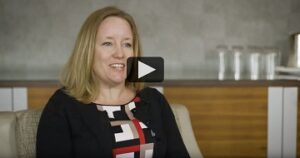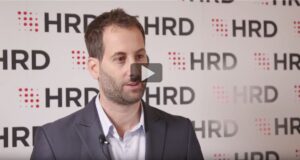Making rewards flexible and accessible
- 4 Min Read
Rewards should be exactly what they say on the tin, but inevitably everyone has a different version of what rewards look like. Tom Blake is Group Head of Reward and Global HR Director at Laird. He believes in reinvention, and core ways to engage with employees. Talking to HRD Connect, Blake gives key insights into […]
- Author: HRD Connect
- Date published: Jan 22, 2018
- Categories

Rewards should be exactly what they say on the tin, but inevitably everyone has a different version of what rewards look like. Tom Blake is Group Head of Reward and Global HR Director at Laird. He believes in reinvention, and core ways to engage with employees. Talking to HRD Connect, Blake gives key insights into how he uses employee feedback to design a flexible and effective rewards strategy.
What is the key priority for you in developing effective reward strategies?
Businesses tend to focus on only one stakeholder group – for instance, they look at financial rewards to try and match their shareholder expectations, which then don’t actually match their employee expectations; or they create fantastic reward schemes that engage and inspire the workforce, but which become unaffordable after a few years because no-one has done the right financial projections.
And the other area that needs to be in balance is the link between short and long-term performance. Most businesses will choose one or the other; in my view you need to strike a balance between both.
How important is it to constantly review your rewards policy?
One of my key ideas is reinvention. No rewards policy can be left on the shelf and then dusted off every 10-15 years and be expected to work well. Businesses change constantly, so you need to be constantly redesigning the rewards policy.
That doesn’t mean, however, that the underpinning philosophy needs to constantly change – you can boil that down to its essence. And it needs to stay aligned with the changes that the business is experiencing – and the really smart businesses have their rewards philosophy one step ahead because if you do that, you can get on the right path to win the war for talent. My view is – and as head of reward I would say this – rewards really do drive every aspect of an organisation.
How much weight do you give employee viewpoint and feedback?
It’s about a variety of different ways of understanding how are employees are feeling: some companies will use employee surveys, with specific reward questions, while others are different. Part of my remit is to build out the reward function, at the moment we use a survey as well as testing and validating any ideas with the leadership team. I want to make it better when we’re asking our employees direct questions. Data is an aspect of that, within some of our global locations we have certain benefits (open enrolment in the US is an example) where you can see what people are thinking just through the benefit choices they’re making. That’s incredibly helpful.
Getting accurate and fast feedback is key to this, because there’s nothing worse than collating out-of-date survey results. And I think that if you rely on surveys, you’re only going to get very general feedback. So at the moment, we’re thinking about changing a recognition system, and we’re asking those involved to vote in order to decide what to do next.
“One of my key ideas is reinvention.” – Tom Blake
Clearly there are certain aspects of the rewards philosophy where the company has to set the terms – bonuses, for instance. But when you have the opportunity to get employees involved in the decision-making process then you should absolutely follow it.
How can employees influence rewards policy?
On co-design, there are definitely certain things that can work. When people have had ideas and given suggestions, we’ve looked at all of them – we’re open to that, unlike some companies that would see that idea as heresy. For instance, we installed electric charging points at some of our UK sites on the back of an employee request.
It’s about balancing what we can afford with employee-led ideas. Clearly we need consistency – for instance how we treat managers across the world needs to be consistent. But in the benefits space, it’s about what is relevant to that group of people in that place at that time, because what people in Germany will want might be different to what they want in China. So we need a clearly local line of communication through our onsite field HR teams – and that can give us immediate feedback on how it plays with the employees.
Our HR teams can maintain their fingers on the pulse of employee moods and behaviour, and ultimately that comes from having the right information. There’s nothing worse than designing something in isolation and throwing it at the organisation – if it’s wrong you’ve wasted a lot of time, money and effort.






